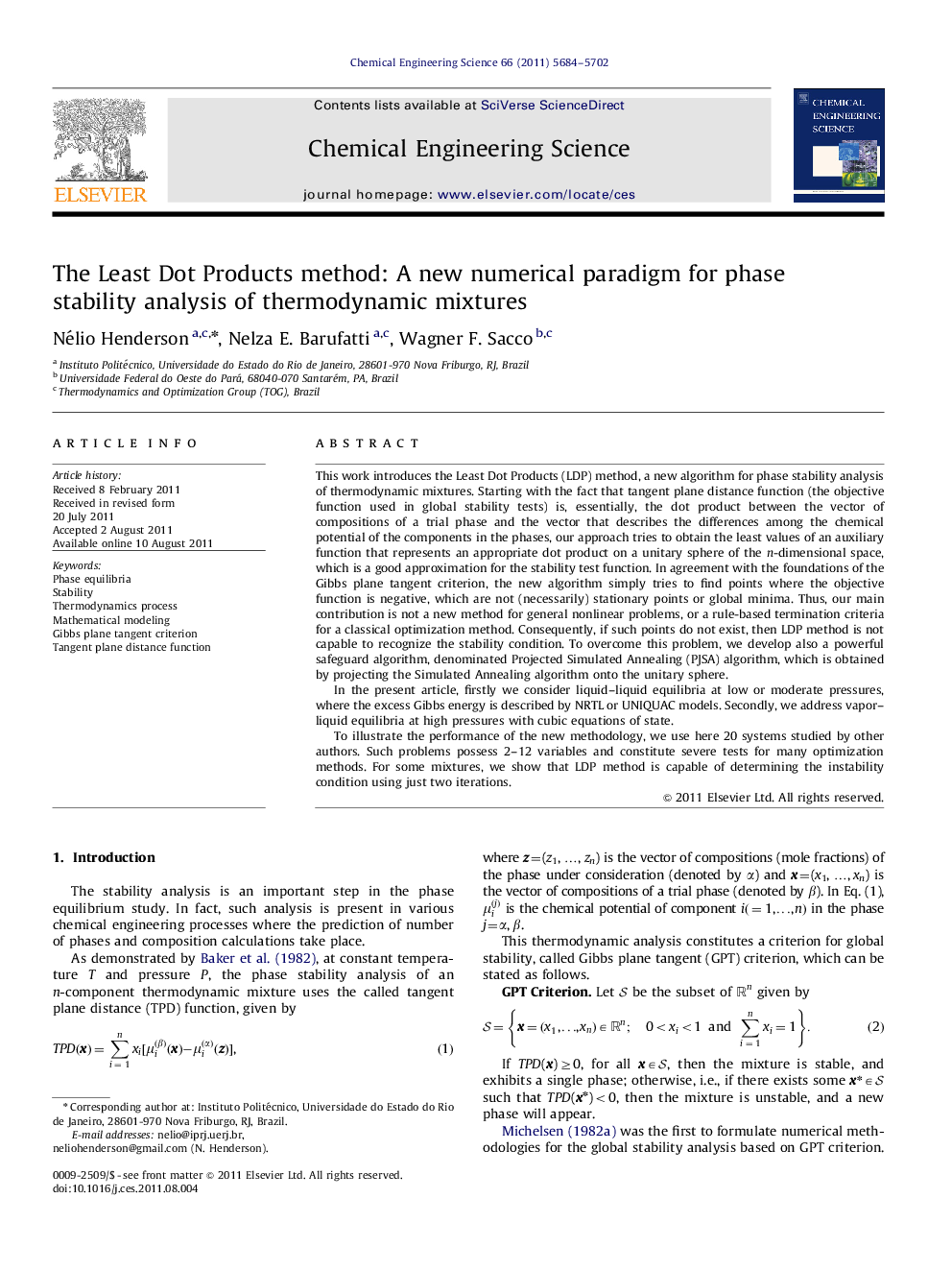| Article ID | Journal | Published Year | Pages | File Type |
|---|---|---|---|---|
| 156149 | Chemical Engineering Science | 2011 | 19 Pages |
This work introduces the Least Dot Products (LDP) method, a new algorithm for phase stability analysis of thermodynamic mixtures. Starting with the fact that tangent plane distance function (the objective function used in global stability tests) is, essentially, the dot product between the vector of compositions of a trial phase and the vector that describes the differences among the chemical potential of the components in the phases, our approach tries to obtain the least values of an auxiliary function that represents an appropriate dot product on a unitary sphere of the n-dimensional space, which is a good approximation for the stability test function. In agreement with the foundations of the Gibbs plane tangent criterion, the new algorithm simply tries to find points where the objective function is negative, which are not (necessarily) stationary points or global minima. Thus, our main contribution is not a new method for general nonlinear problems, or a rule-based termination criteria for a classical optimization method. Consequently, if such points do not exist, then LDP method is not capable to recognize the stability condition. To overcome this problem, we develop also a powerful safeguard algorithm, denominated Projected Simulated Annealing (PJSA) algorithm, which is obtained by projecting the Simulated Annealing algorithm onto the unitary sphere.In the present article, firstly we consider liquid–liquid equilibria at low or moderate pressures, where the excess Gibbs energy is described by NRTL or UNIQUAC models. Secondly, we address vapor–liquid equilibria at high pressures with cubic equations of state.To illustrate the performance of the new methodology, we use here 20 systems studied by other authors. Such problems possess 2–12 variables and constitute severe tests for many optimization methods. For some mixtures, we show that LDP method is capable of determining the instability condition using just two iterations.
► We introduced the Least Dot Products (LDP) method. ► The LDP method is a new numerical paradigm for phase stability analysis. ► This method tries to find points where the tangent plane distance function is negative. ► These points are not (necessarily) stationary points or global minima.
